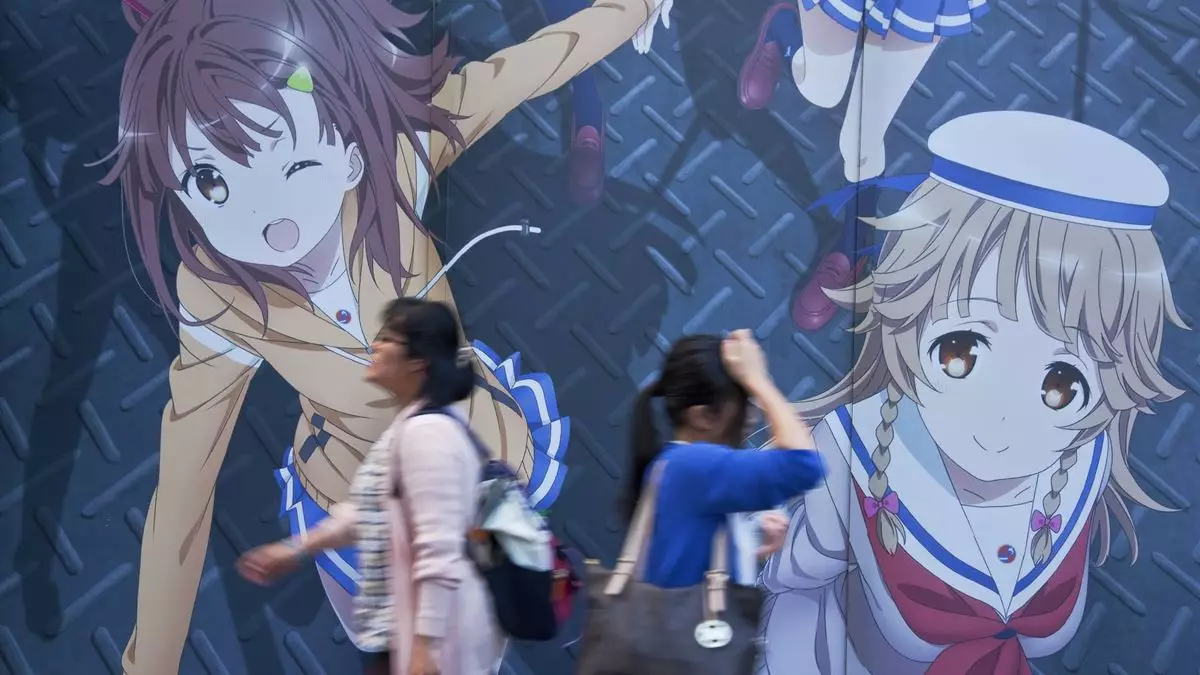Scrolling through TikTok, one can’t help but feel an uneasy marriage of creativity and artificial intelligence. While the platform is alive with infectious music and dance challenges, there’s another breed of content lurking in the algorithm—AI-generated images that can transform mundane selfies into snapshots that might as well have been pulled from an anime film. Recently, a major update from OpenAI has introduced GPT-4o, an evolution in their image generation technology that promises to enhance the depth and variety of AI-generated art. This leap forward raises profound questions about artistry, ownership, and the future of creativity.
Imagine a virtual environment where artists no longer hold exclusive rights to their stylistic signatures. With GPT-4o’s capabilities to replicate visual themes from beloved mediums, such as the magical worlds of Studio Ghibli or the blocky realms of Minecraft, a new frontier appears enticingly accessible. Yet, it also reveals a potentially perilous landscape for both artists and art consumers. While this technology appears revolutionary, we must tread carefully, considering the repercussions of this creative democratization.
Fluidity of Creation and the Ethics Within
OpenAI’s model thrives on a diet of vast data, utilizing both public domain materials and information acquired from strategic partnerships. Prominent were the comments made by OpenAI executives, asserting respect for artists’ intellectual rights as they navigate the ethical minefield of AI art generation. Still, one can’t shake the feeling that these declarations may not suffice in the burgeoning world of AI-rendered visuals. The simple fact is that while models like GPT-4o can produce visuals reminiscent of established creators, the very act of imitating an artist’s style carries an aura of disrespect, especially when that artist is still actively creating.
Compounding this concern is the fact that legendary figures, like Hayao Miyazaki, have openly criticized the integration of AI into creative endeavors. Miyazaki’s apprehension stems not merely from personal preference but rather reflects a broader anxiety about technology encroaching upon the human experience of art. No matter the sophistication of GPT-4o, it lacks the spirit, intention, and deeply-rooted craftsmanship that human artists pour into their work. Reducing artistic expression to mere parameters and algorithms feels starkly antiseptic, stripping away the profound connection humans share through creative endeavors.
The Profit Motive and the Erosion of Creative Work
As AI-generated content flourishes, it unnervingly positions itself to disrupt established creative economies. Could we soon find ourselves on a slippery slope where cheap, AI-generated artwork saturates markets, compelling artists to compete against faceless software programs? Imagine a world where businesses opt for the lowest-cost option, favoring AI-generated visuals over paying skilled craftsmen and women for their unique expressions. This troubling prospect could detrimentally warp perceptions of what art is worth, making it increasingly difficult for human artists to sustain a livelihood.
Some may argue that AI can augment the creative process, offering tools that enhance rather than replace human creativity. But as reputable artists experience competition from algorithmically-generated art, one can’t help but wonder if the tools meant to assist creativity risk becoming provocateurs of its decline. The danger lies in a culture that prioritizes speed and cost-effectiveness over authenticity and mastery.
Workarounds and Imitation: A Dilemma of Ambivalence
Despite OpenAI’s approaches to respect copyrighted material, the internet has a knack for circumventing systems designed to protect creators. Users will inevitably find loopholes allowing the generation of images that toe the line of copyright infringement. These workarounds raise pressing questions: How far can imitation stretch before it morphs into outright plagiarism? As Sam Altman’s recent change to an anime profile picture suggests, the boundaries around content creation become increasingly fuzzy, inviting discussions around identity, style, and respect for original content.
The allure of AI is potent; it tempts even industry titans into a culture of imitation, risking sketching over the rich tapestry created by individual artists. As we plunge deeper into this digital era, we find ourselves confronted by an intricate web of moral and ethical dilemmas.
Finding Balance in a Technological Age
Ultimately, the relationship between artificial intelligence and artistic expression demands careful navigation. While we cannot overlook the sheer potential of tools like GPT-4o to disrupt and innovate, we must equally advocate for the rights of human creators. A balance needs to be struck—one that empowers creators rather than undermines them. Surely, as we marvel at the wonders of technology, we must remain vigilant about ensuring that human creativity, imagination, and individuality are not sacrificed at the altar of progress.

